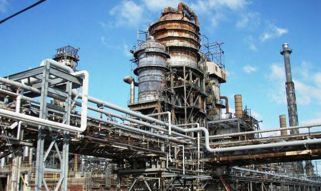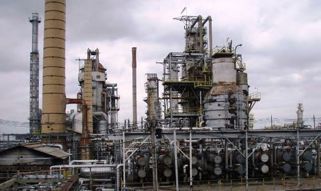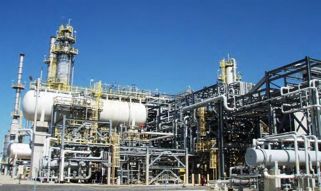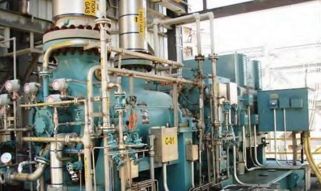Plant One
Complete Formaldehyde plant (2001) - 200tpd @ 37%
Plant Two
Photos
Immediate Availability! Complete FORMALDEHYDE Plant - 25,000 tons/year @ 50%
• Substantial upgrading in late 1990's
• All stainless steel construction
• Complete documentation
• Annual Fuel & Energy Report
Plant Three
Photos (link)
Formaldehyde process
The formaldehyde unit has a total capacity of 35.000 tonnes/year of formaldehyde 37 %. This total capacity is calculated on 330 working days/year.
This plant offers the following advantages :
- • Continuous production of high concentrated formaldehyde (up to 60 %).
- • Methanol and water washing columns.
- • Possibility of using spent methanol as raw material.
- • Possibility of producing continuously Elcoform (Formaldehyde 55 % - Methanol 35 % - Water 10 %).
Plant Description
The silver-catalysed formaldehyde process
The silver-catalysed process produces formaldehyde by reaction of methanol vapour and air on a silver catalyst. Oxidation and dehydrogenation of methanol are the basic mechanism of the silver-catalysed route.
Methanol is vaporised in an evaporator and the vapours mixed with air will go through the reactor containing a bed of pure silver in a granular crystalline form.
The reactor is supported above a steam boiler so that the reaction products pass through the boiler tubes before passing to further cooling stages and produce steam (heating transfer between the reacted gases and water).
The reacted gases containing formaldehyde, methanol and water are condensed and cooled in passing to a circulating absorber column followed by a first methanol scrubbing system and in a second step a water scrubbing system for the effluent gases. The aqueous formaldehyde-methanol is removed from the absorber to a distillation column to separate methanol and aqueous formaldehyde. The methanol is returned to the process as reaction feed and the aqueous formaldehyde up to 55 % formaldehyde with 1 % or less of methanol is stored into tanks.
The process vent gas (after scrubbing) which contains approximately 20 % hydrogen and small amounts of methanol, formaldehyde, and methyl formiate are burned in a boiler to produce steam.
Production plant
The production plant consists of :
• Equipment
- • One (1) evaporator
- • Two (2) air blowers (one with speed variator)
- • One (1) reactor with boiler tubes
- • One (1) flame-arrester
- • One (1) gas/gas heat exchanger
- • Seven (7) liquid/liquid heat exchangers
- • Two (2) condensers
- • One (1) packing absorption column
- • Two (2) tray absorption columns (bubble caps)
- • One (1) tray stripping column (bubble caps)
- • One (1) tray distillation column (bubble caps)
- • Vessels
- • Pumps (Sihi) doubled to secure the process
- • Pipes, valves, etc.
- • Steel : SS 316 L
- • Protection of electric motors : IP 55 Eexd II BT 4
• Electrical equipment
- • Switch and control boards
- • Cables
• Instrumentation equipment
- • Pneumatic valves
- • Flow transmitters
- • Mass flow transmitters
- • Pressure transmitters
- • Temperature transmitters
- • Board with programmable converter/transmitter, indicator and numeric programmable controllers.
• Hardware and software process control system - The process control system is designed to manage the following scopes:
- • Display of the process
- • Communication between the operator and the numeric programmable controllers
- • Protocols of alarms and safety devices
- • Recording of process parameters and trend curves
- • Documentation - A computer with IN TOUCH (Wonderware Corporation) software controls the system.
- • Silver catalyst - The silver catalyst consists of a bed of pure silver in a granular crystalline form supported as silver wire gauzes.
Building - The building protects pumps, reactor, regulation and washing columns. It has a steel frame with corrugated iron plates and is easy to dismantle.
Engineering Services Description
• General - The engineering has been executed for the production plant including utilities.
• Scope -
- • The engineering includes all process and hydraulic calculations necessary for the desired capacity of the plant.
- • These process calculations result in the process data sheets for all major equipment.
- • Design for pumps and blowers including process data sheet.
- • Specification of pipes and minor process equipment (dimensions and material).
- • Process data sheets for instrumentation.
- • Process control system.
- • Specification of the safety relief devices on all major equipment.
- • HAZOP study.
- • Documentation - Following documents are available (autocad software):
- • Process Flow Diagram (PFD)
- • Process and Instrumentation Diagram (P&ID)
- • Equipment lists and data sheets
- • Equipment lay-out plan including foundation drawing
- • Piping design : general piping plan
- • detailed piping plans (ISO)
- • fittings and piping specs lists
- • cable ways
- • Process data sheets for major equipment (columns, reactor, evaporator and heat exchangers) and drawings
• Process data sheets for transfer systems (pumps and blowers)
• Drawings of vessels
• Specifications of safety devices
• Electrical equipment list including cables
• Instrument and cables list
• Electrical and instrument lay-out (boards)
• Utilities data sheets : cooling water, steam and electrical power supply (high and low voltage)
• Instructions manual for safety procedures and maintenance
• Operation manual with detailed start-up and shut down procedures and operating instruction of process
• Spare part lists
• Data sheet concerning insulation















